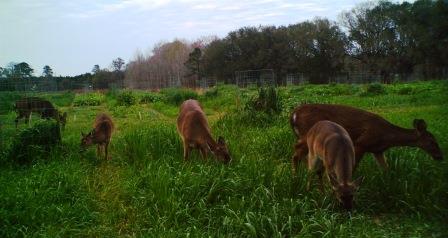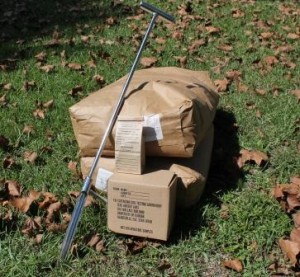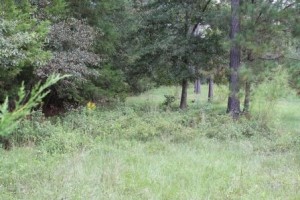The shortening days and cooling temperatures serve as a reminder to many area sportsmen that deer hunting season is just around the corner. As the season draws near many hunters will be planting winter food plots. These plots generally consist of a variety of cool season crops, most often small grains and legumes. These plots are beneficial for both hunter and deer. Food plots provide a source of nutrition for deer through the winter when green browse can become harder to find. By providing a concentrated food source in a known location the hunter increases his or her likelihood of encountering a deer. When done correctly winter food plots can provide the deer herd with much needed nutrition well into the spring after the end of hunting season.
There are several factors to consider prior to establishing food plots. The first factors to look at are the size and location of the plots. There is no solid rule on how big a food plot should be. However, it should be noted that excessively large plots are often wasteful because deer tend to stay closer to cover associated with the edge of plots, rarely venturing out into the middle of very large plots. Generally speaking, multiple smaller plots, 1 – 5 acres, are more effective. Obviously, the more total acreage devoted to food plots the more the nutrition will be provided to the deer herd.
When selecting plot location look for areas that receive adequate sunlight, the more direct sun the better. If using a road or pine row for the plot location be sure the opening is at least 50ft wide to ensure adequate sunshine. Areas that have very sandy soils and areas that are prone to hold standing water should be avoided if possible. Additionally, when selecting a location for a food plot try to utilize areas where multiple types of habitats intersect. For example where hardwoods meet planted pines or where a cutover area meets tall timber. These “edges” are frequented by a variety of wildlife species.
-
Once the food plot location(s) have been determined the next step in the process is to assess and maximize the productivity of the soil in the area. The best way to do this is to have a soil analysis performed. In order to have an analysis performed, samples must be collected and sent off to a lab. The University of Florida Extension Soils Laboratory will analyze a soil sample and send back crop specific fertilizer and liming recommendations for only $7. Contact your local UF/IFAS Extension office for details on how to correctly take soil samples and to get the forms and packaging materials need to send samples to the lab. Correctly following the recommendations provided by the soils laboratory will greatly affect how productive and nutritious the crops in your food plot are.
Selecting the correct crops to plant is also key to a successful food plot. Crops being planted this time of year must be able to grow well in cooler weather. The most common crops used are small grains (oats, wheat, rye, rye grass) and clovers (red, white, crimson, etc.). These crops and others can all be productive if planted correctly and varieties suited to Florida are used. It is very important to choose varieties that have been bred and selected for production in Florida. Using crop varieties intended for use in other parts of the country will almost certainly result in crop failure. UF/IFAS Extension complies a list of recommended food plot varieties every few years. These recommendations are based on test plots grown here in the panhandle. Variety recommendations and other resources to help insure the success of your food plot are available at your local UF/IFAS Extension office or online at UF/IFAS Forages of Florida – Wildlife
A little additional planning and work up front combined with following the available fertilizer and variety recommendations can greatly improve the success and productivity of your food plot. Successful food plots can have lasting positive effects on the deer herd. Helping to make your hunting seasons more enjoyable this year and for years to come.
- Peanut Maturity Update – 10/9/25 - October 10, 2025
- Fall Can be a Great Time for Vegetation Management - October 3, 2025
- Peanut Maturity Update – 9/25/25 Edition - September 26, 2025



